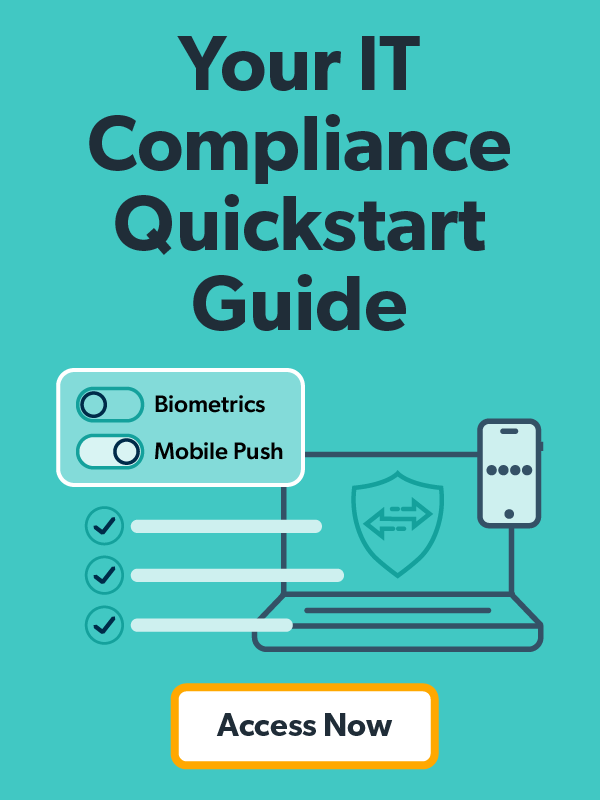Healthcare technology has evolved rapidly in recent years, from the digitization of healthcare records to the more recent pandemic-driven spike in technological growth in the industry.
While these strides have made healthcare more accessible to patients with technology like patient portals and telehealth, they have also brought on a rise in cybercrime. This digitization has caused more healthcare information to be available online — including personally identifiable information (PII), which is the most highly sought-after type of data by hackers. As healthcare organizations handle more valuable digital information, they become prime cybercrime targets.
Cybersecurity attacks on healthcare organizations spiked soon after the onset of the pandemic. Now, healthcare is currently the third-most targeted industry in 2022, which saw a 74% increase in attacks from 2021 to 2022.
IT professionals are under enormous pressure to prevent these attacks and detect threats quickly. For healthcare organizations based in the United States, this means complying with HIPAA standards — especially the HIPAA Security Rule, which focuses on the security of electronic health information. This blog will walk through HIPAA’s three security components and identify how IT admins can comply with them.
Components of the HIPAA Security Rule
The U.S. Department of Health and Human Services (HHS) writes, “The HIPAA Security Rule establishes national standards to protect individuals’ electronic personal health information that is created, received, used, or maintained by a covered entity.” These entities include all providers, health plans and health care clearinghouses that transmit any HHS information in electronic form. There are three components to this rule: Administrative, Physical, and Technical.
Administrative Requirements
Administrative requirements include organization-wide actions and policies to protect electronic health information and manage employee conduct. This generally means knowing which employees have access to certain data, which calls for robust identity and access management (IAM), privileged access management (PAM), and telemetry. It is also recommended that organizations perform data security assessments annually and have a plan in place to fix compromised IT systems. Training is also usually a key requirement in this area as well.
Physical Requirements
Physical security requirements are meant to prevent any physical thefts or losses of devices that contain patient records. These breaches can involve stolen devices, but they also include simple actions like a malicious actor looking over a healthcare professional’s shoulder when at their desktop.
Implementing employee training and using a mobile device management (MDM) system for managing both company-issued and employee-owned devices used to access organizational resources can help maintain physical security. Look for an MDM that can require device passwords, screen inactivity timeouts, and the ability to lock or wipe a lost or stolen device for better device security.
Technical Requirements
Technical security requirements are controls put in place to protect networks and devices from data breaches. These controls include encrypting sensitive information, monitoring and alerting to protect networks, phishing training for employees, password rules, cloud-based RADIUS for more secure network access, and other protections over access to important resources.
Why Does Meeting HIPAA Standards Matter?
Healthcare records contain information that is confidential between patients and providers. Jeopardizing this data by not having stringent security measures in place can be extremely harmful to both the organization as well as its patients. The HIPAA Security Rule creates a framework for securing this data, providing organizations and patients confidence that all PII remains private and confidential.
Additionally, cybersecurity breaches can be costly. Violating HIPAA can lead to large financial penalties and corrective actions — the average healthcare data breach is now estimated to cost an average of $10 million. For newer organizations, this can be a business ender; the costs of investing in compliance upfront are almost always lower than the costs of paying for a breach after the fact.
How JumpCloud Helps Admins Meet HIPAA Security Rule
Cloud directories enable you to implement, track, and manage compliance controls with one tool. The right cloud directory can provide you with robust telemetry and manipulable controls so you can closely manage your HIPAA compliance.
JumpCloud, for example, is an open cloud directory platform that allows you to implement HIPAA controls as well as manage and monitor their status. JumpCloud offers some of the most important controls for HIPAA compliance, including:
- IAM
- Multi-factor authentication (MFA)
- Single sign-on (SSO)
- Full-disk encryption (FDE)
- OS-agnostic device management
Further, the platform grants powerful yet user-friendly control over IT resource access through unified identity and device management. This unification and visibility allows IT admins to trust in consistent access management across resources, locations, and devices while closely tracking compliance. And as an open directory platform, JumpCloud allows you to work the way that works best for your organization (without hurting your security or compliance). Learn more about how JumpCloud supports IT compliance.
Making IT Compliance Painless
Compliance may not be fun, but it doesn’t have to be a headache. JumpCloud’s IT Compliance Quickstart Guide was designed to help IT admins navigate compliance with HIPAA and many other regulations. It even offers a free hands-on demo that helps you implement some of these critical IT compliance controls in your own environment. Get started with the IT Compliance Quickstart Guide now.





